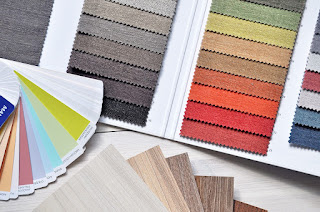The Evolution of Furniture Design: From Antiquity to Modernity
Introduction
🌟 Hello, lovely readers! I hope you're all doing fabulously well. I recently had the pleasure of visiting the High Point Furniture Market from October 14th to the 18th, 2023, and oh, what a delightful trip it was! I talked with Dave Urbanick at the Chromcraft exposition and was impressed by their new McKenzie & Co. Outdoor collection dubbed Newport.
As a Gen Xer with a penchant for home decor and furniture, this experience took me on a mesmerizing journey down memory lane. Walking through the bustling showrooms and witnessing the latest trends in interior design, I couldn't help but reminisce about the pieces that have graced my own homes over the years – from my first apartment in the '90s to the cozy family abode we've lovingly cultivated today. It's amazing how a well-crafted piece of furniture or a thoughtfully designed space can transport you back in time. So, here we go, my friends; I'm going to take a ride down memory lane, pausing to reflect on the styles and trends that have shaped our homes through the decades. Let's delve into the world of interior design history and celebrate the timeless beauty of our living spaces! 🏡✨
The Early Origins
The roots of furniture design extend back to the earliest human societies. Remarkable examples can be found in ancient Egypt, where meticulously crafted wooden furniture, including chairs, tables, and storage chests, not only served utilitarian functions but also held profound cultural and symbolic significance.
Throughout history, diverse cultures have imparted their influence upon furniture design. The Greeks and Romans, for instance, introduced ornate carving, luxurious upholstery, and advanced joinery techniques. In the Middle Ages, furniture took on a heavy and ornate character, mirroring the social standing of its owner. However, it was during the Renaissance that furniture design began to harmonize form and function, reviving classical aesthetics and prioritizing comfort and practicality.
The Victorian Era
🕰️ Ah, the Victorian era – a time when furniture design embodied elegance and opulence like no other. Victorian furniture, with its ornate carvings, richly upholstered chairs, and dark, heavy woods, holds a special place in my heart. It's as if each piece told a story of grandeur and sophistication. The intricate details, such as tufted upholstery and claw-footed tables, were a testament to the craftsmanship of the period. And oh, those exquisite floral patterns on fabrics and wallpapers! The Victorian era was all about creating an aura of comfort and luxury in the home, and the furniture of the time certainly achieved that with flair. It's incredible how these pieces have stood the test of time, evoking a sense of nostalgia and a touch of romance in the modern world. 🌹🏡
The Modernist Movement
The 20th century ushered in a radical transformation in furniture design with the advent of the Modernist movement. Pioneering designers such as Le Corbusier, Mies van der Rohe, and Charles and Ray Eames championed minimalist, functional designs, where simplicity and clean lines reigned supreme. Groundbreaking materials like steel, glass, and plywood were harnessed in their creations, signifying a departure from the ornate styles of yesteryears.
An iconic masterpiece emblematic of this era is the Barcelona Chair, jointly designed by Mies van der Rohe and Lilly Reich in 1929. Its sleek, chrome-plated steel frame and opulent leather upholstery epitomized the Modernist ethos, transcending into an enduring symbol of form and function in furniture design.
Post-Modernism and Beyond
The latter half of the 20th century witnessed a shift away from the stringent functionalism of Modernism. Post-Modernism embraced eclecticism, seamlessly blending elements from diverse design styles and infusing furniture pieces with humor and irony. Design luminaries such as Ettore Sottsass and the Memphis Group boldly challenged traditional design conventions, resulting in audacious and vivid creations that pushed the boundaries of conventional furniture.
Contemporary Trends
In the contemporary landscape of furniture design, several dynamic trends shape the industry:
Sustainability: With an escalating consciousness of environmental concerns, furniture design now places a profound emphasis on sustainable materials and ecologically responsible production methods. Designers are actively integrating recycled and renewable materials while pioneering innovative techniques such as 3D printing to curtail waste.
Minimalism: The time-honored principles of simplicity and functionality persist as influential forces in contemporary furniture design. Clean lines, a palette of neutral colors, and multifunctional pieces are hallmarks of modern interiors.
Technology Integration: In an era where technology is seamlessly woven into daily life, furniture design has adapted to accommodate this integration. Smart furniture boasting built-in charging ports, wireless charging capabilities, and discreet device storage solutions has become increasingly prevalent.
Customization: The discerning modern consumer seeks furniture pieces that reflect individuality and personal taste. In response, designers and manufacturers are offering customizable options, enabling individuals to craft furniture tailored precisely to their unique needs and preferences.
Conclusion
Furniture design stands as a dynamic and ever-evolving field that has witnessed profound transformations throughout history. From the opulent creations of ancient civilizations to the sleek and functional designs of the Modernist movement, furniture has transcended its role as mere utilitarian objects, reflecting human culture and values. In the present, contemporary furniture design is defined by a commitment to sustainability, minimalism, technology integration, and customization, symbolizing an ongoing dialogue with the changing dynamics of our lives. As the journey of furniture design continues, it promises to stretch the boundaries of innovation, crafting pieces that elevate our living spaces and enrich our daily experiences.


Comments
Post a Comment